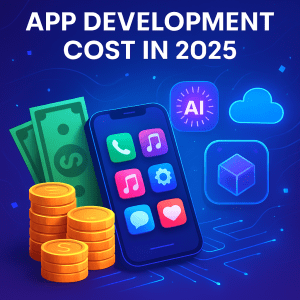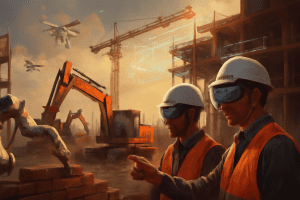How IoT is Powering the Future of Telecommunications: Opportunities and Challenges
The telecommunications industry has always been at the forefront of technological innovation. From the days of landline telephones to the rise of mobile networks, telecom has continuously evolved to meet the growing demands of consumers and enterprises. Today, the Internet of Things (IoT) is driving the next big transformation. By connecting billions of devices, IoT is reshaping how telecom companies deliver services, optimize operations, and create new revenue models.
In this article, we will explore how IoT is revolutionizing the telecommunications sector, the opportunities it presents, the challenges to overcome, and what the future holds.
Understanding IoT in Telecommunications
The Internet of Things (IoT) refers to a vast ecosystem of interconnected devices that communicate and exchange data over the internet. In telecommunications, IoT extends beyond smartphones to include smart home devices, industrial sensors, healthcare monitors, autonomous vehicles, and more. Telecom companies serve as the backbone of this ecosystem, providing the connectivity that allows IoT devices to function seamlessly.
With the rollout of 5G networks, telecom operators can now deliver ultra-low latency, high bandwidth, and massive device connectivity — all of which are crucial for IoT adoption. This makes telecom not just a service provider but also a key enabler of smart ecosystems across industries.
Opportunities for Telecommunications through IoT
1. New Revenue Streams
IoT opens up multiple monetization opportunities for telecom providers:
- IoT Data Plans: Similar to mobile plans, telecoms can provide subscription-based IoT connectivity packages for enterprises.
- Managed IoT Services: Offering end-to-end solutions like device management, analytics, and security.
- Vertical-Specific Solutions: From smart cities to healthcare and logistics, telecom companies can tailor IoT services to industry needs.
2. Enhanced Network Efficiency
IoT helps telecom companies monitor and optimize their own infrastructure. For example:
- Sensors can detect network congestion in real time.
- Predictive maintenance reduces downtime of critical network equipment.
- Automated traffic management improves service quality.
3. Smart Cities and Infrastructure
Telecom providers can partner with governments to implement smart city projects powered by IoT:
- Smart lighting and waste management systems.
- Intelligent traffic management.
- Energy-efficient utilities.
4. Enterprise Solutions
IoT-enabled telecom services offer businesses the ability to:
- Track assets in logistics.
- Monitor industrial equipment remotely.
- Enhance customer service with connected products.
5. 5G and IoT Synergy
5G networks amplify IoT’s potential by providing faster connectivity and supporting millions of devices simultaneously. This opens opportunities for:
- Autonomous vehicles.
- Remote surgeries in healthcare.
- Real-time industrial automation.
Challenges of IoT in Telecommunications
Despite the opportunities, telecom operators face significant hurdles in implementing IoT effectively:
1. Security Risks
IoT devices often have weak security protocols, making them vulnerable to cyberattacks. Telecom providers must ensure robust network and data security to protect consumers and enterprises.
2. Scalability
As billions of devices connect to networks, scalability becomes a challenge. Telecoms need to ensure their infrastructure can handle massive amounts of data without service degradation.
3. Interoperability
With numerous device manufacturers, ensuring seamless communication between different IoT devices and platforms remains a challenge.
4. High Implementation Costs
Deploying IoT infrastructure, upgrading networks, and managing devices require significant investment, which can be a barrier for smaller telecom operators.
5. Regulatory and Compliance Issues
Different regions have varied rules about data privacy, security, and network management. Telecom providers must navigate this complex regulatory environment.
Real-World Applications of IoT in Telecom
- Smart Homes: Telecom operators provide IoT-powered home automation solutions, including connected cameras, thermostats, and energy management systems.
- Healthcare: IoT enables remote patient monitoring and telemedicine, supported by telecom infrastructure.
- Automotive: Connected vehicles rely on telecom networks for real-time navigation, safety alerts, and predictive maintenance.
- Industrial IoT (IIoT): Telecom companies support factories with connected machinery, reducing downtime and improving efficiency.
The Future of IoT in Telecommunications
Looking ahead, IoT will continue to redefine telecom. Key trends include:
- Edge Computing: Moving data processing closer to devices to reduce latency.
- AI Integration: Leveraging artificial intelligence to analyze IoT data and automate decisions.
- Blockchain for IoT Security: Securing IoT networks through decentralized technology (see our article on Blockchain Integration in Business).
- Industry-Specific IoT Platforms: Telecom companies may develop dedicated platforms for industries like healthcare, finance, and logistics.
FAQs on IoT in Telecommunications
Q1. What role does 5G play in IoT adoption?
5G provides ultra-fast connectivity, low latency, and massive device support, which are critical for IoT applications like autonomous driving, smart cities, and remote healthcare.
Q2. Is IoT secure enough for telecom use?
IoT security is a concern, but with advanced encryption, blockchain integration, and continuous monitoring, telecom companies can significantly reduce risks.
Q3. How can telecom companies monetize IoT?
They can introduce IoT-specific data plans, offer managed services, and create tailored solutions for industries like logistics, healthcare, and retail.
Q4. What industries benefit most from IoT-powered telecom?
Healthcare, automotive, smart cities, manufacturing, and logistics are among the industries seeing the most significant benefits.
Q5. What is the biggest challenge for IoT in telecom?
Scalability and security remain the biggest hurdles, especially as billions of devices connect simultaneously.
Conclusion
The Internet of Things is more than just a technological buzzword; it is the driving force behind the future of telecommunications. While challenges such as security, scalability, and interoperability remain, the opportunities far outweigh the risks. Telecom operators that strategically embrace IoT will not only enhance their infrastructure but also unlock new revenue streams and play a central role in shaping a smarter, more connected world.
To explore more about how emerging technologies are reshaping industries, visit our blogs on AI in Customer Journeys, Predictive Analytics, Technology in Education, and React Native vs Swift.
You can also learn more about our approach at How We Work, explore Mobile App Services, or read our latest updates on the TechOTD Blog. For more tech insights, check our second page here and explore the article on Best Gadgets for Programmers in 2025.
By strategically leveraging IoT, the telecom industry will not just power connections but also shape the digital future.











